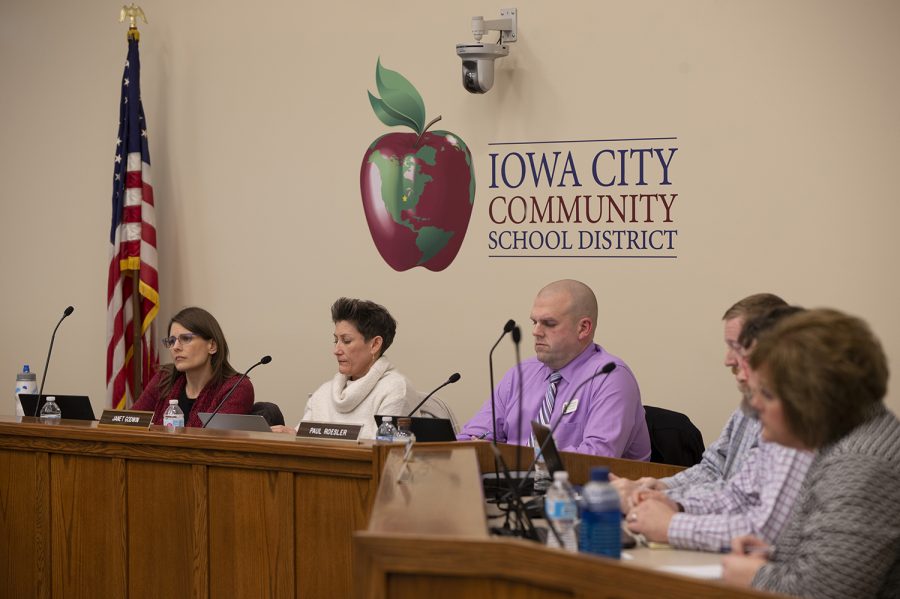Nadler: ICCSD, these children are not just numbers
Iowa City’s redrawn school district makes demographics look good, but can negatively impact children who have to switch back and forth between schools.
School Board members listen as people raise concerns about school rezoning at the School District Administration Building on Tuesday. At the meeting, board members voted to redraw school zones in an effort to create a more equitable learning system.
December 6, 2018
Once again, the Iowa City School Board has redrawn district boundaries for some of its schools. While this is because of two new schools opening and one school closing, it still has major effects on the current students. As an Iowa City native and someone who has experienced the effects of the district’s redrawing of boundaries, I understand its personal effect.
The School Board needs to remember that lives are affected when redrawing the boundaries — the affected children are not pawns.
RELATED: Iowa City school board redraws boundaries for next fall
In an attempt to increase diversity among the schools, the district chose to redraw the lines. A specific neighborhood on the West Side is being directly affected. The neighborhood was moved from Horn Elementary School to Weber Elementary School two years ago. Now, those same families will be redistricted back to Horn, unless they can use open enrollment or be grandfathered into Weber, which will be discussed at future School Board meetings.
Redistricting is unfair to children who have to deal with the effects. Transitioning to a new school is difficult for children, and adjustment takes time.
RELATED: School Board accelerates some construction
I spoke to Kristy Nabhan-Warren, a parent whose children are directly affected by the boundary change. She said, “What disturbs me is that it’s never been explained to us in a clear way why they’re making all of these changes and undoing changes made two years ago.”
While diversity in schools is very important, switching children to and from schools has negative effects. Do the diversity numbers matter more than children having to transition from different schools so often?
Nabhan-Warren said, “There is this illusion calculus that if we get the numbers right, things will be perfect.”
RELATED: ICCSD closes doors to Roosevelt center
The School Board has lost sight of the little human lives that have to bear the effects of new district lines. While one school change can be adjustable for children, two changes within two years is merely unfair, ridiculous, and unjust for children to involuntarily endure.
Studies by the MacArthur Foundation show that when children move to new schools, they endure stress, and such a transition can disrupt their academic ability and social skills. As an adult, it can be stressful for me to enter an unknown environment. I imagine the transition is much more intense for a child. Although School Superintendent Steve Murley recognizes the psychological toll that families and students face from redistricting, that hasn’t stopped him and the board from making such senseless decisions.
Nabhan-Warren summed up by saying, “I sincerely hope that the board starts seeing the children and families as people and not as numbers.”
As a product of the School District, I know how great the schools we have are. I fear that the well-being of the children affected by swapping schools is lost in the want to have better demographics in the School District.
I want the School Board to recognize the lasting effects that switching children to and from schools have. The issue of equalizing diversity in schools is not so simple as a math problem. These children are not just numbers.





















